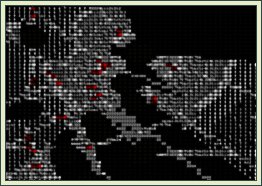This is a very strong area at AI Factory. Computer
opponents often suffer from bland or predictable behaviour. For
the former of these problems, AI Factory has a generic module providing
meaningful characterisation that can be plugged into many games.
This has been tested in 10 games to date, and (for example) provides
the range of 80+ characters in 3D Pool. These characters are tuned
and tested against each other in the AI Work Bench to provide opponents
with genuinely interesting characteristics.
Player predictability is a
different problem, but has been tested in one game that has successfully
demonstrated that it can quickly learn against human opposition, and modify
and greatly improve its play. The game tested is Gobang (aka Pente), which
was able to learn faster than the player testing it, and eventually became
almost unbeatable. These techniques have not been widely tested yet, but
will certainly be developed and featured in our new engines to come.

